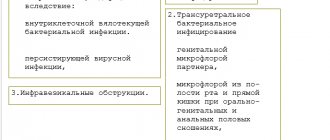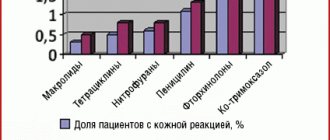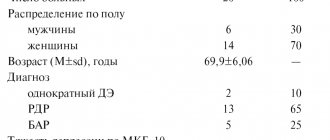Composition and release form
The drug is available from the pharmacy in several dosage forms:
- Eye drops 0.25%.
- Ointment 1% and 5%.
- A solution based on alcohol of different concentrations - 1%, 3%, 5%, 0.25%.
- Capsules and tablets of 500 mg and 250 mg, tablets of 650 mg with a prolonged therapeutic effect.
The active ingredient is chloramphenicol. Excipients:
Levomycetin Actitab, 500 mg, film-coated tablets, 10 pcs.
Levomycetin Actitab is a broad-spectrum bacteriostatic antibiotic that disrupts the process of protein synthesis in the microbial cell at the stage of transfer of t-RNA amino acids to ribosomes.
Effective against strains of bacteria resistant to penicillin, tetracyclines, and sulfonamides.
Active against the following microorganisms: Escherichia coli, Shigella dysenteria, Shigella flexneri spp., Shigella boydiispp., Shigellasonnei, Salmonellaspp. (including Salmonella typhi, Salmonella paratyphi), Staphylococcus spp., Streptococcus spp. (including Streptococcus pneumoniae), Neisseria meningitidis, Neisseria gonorrhoeae, a number of strains of Proteus spp., Burkholderia pseudomallei, Rickettsia spp., Treponema spp., Leptospira spp., Chlamydia spp. (including Chlamydia trachomatis), Coxiella burnetii, Ehrlichia canis, Bacteroides fragilis, Klebsiella pneumoniae, Haemophilus influenzae.
Does not affect acid-fast bacteria (including Mycobacterium tuberculosis), anaerobes, methicillin-resistant strains of staphylococci, Acinetobacter spp., Enterobacter spp., Serratiamarcescens, indole-positive strains of Proteus spp., Pseudomonasaeruginosaspp., protozoa and fungi. Microbial resistance develops slowly.
Pharmacokinetics
After administration, the binding to plasma proteins is 50-60%. Time to reach maximum concentration (TCmax) after administration is 1-3 hours. Volume of distribution is 0.6-1.0 l/kg. Therapeutic concentration in the blood remains for 4-5 hours after administration. Penetrates well into body fluids and tissues. Its greatest concentrations are created in the liver and kidneys. Up to 30% of the administered dose is found in bile. The maximum concentration (Cmax) in the cerebrospinal fluid is determined 4-5 hours after a single dose and can reach 21-50% of the Cmax in plasma in the absence of inflammation of the meninges and 45-89% in the presence of inflammation of the meninges. Passes through the placental barrier, concentrations in fetal blood serum can be 30-80% of those in maternal blood. Passes into breast milk. The main amount (90%) is metabolized in the liver. In the intestine, under the influence of intestinal bacteria, it is hydrolyzed to form inactive metabolites.
It is excreted within 24 hours by the kidneys - 90% (by glomerular filtration - 5-10% unchanged, by tubular secretion in the form of inactive metabolites - 80%), through the intestines - 1-3%. The half-life (T1/2) in adults is 1.5-3.5 hours, in case of impaired renal function - 3-11 hours. T1/2 in children is 3.0-6.5 hours. It is poorly excreted during hemodialysis.
pharmachologic effect
The drug has a pronounced antibacterial and some anti-inflammatory effect.
Pharmacological activity is manifested against most gram-negative and gram-positive microorganisms, also rickettsia, spirochetes and pathogenic bacteria that are resistant to streptomycin and sulfonamides.
The mechanism of action of Levomycetin is characterized by a violation of the genetic apparatus of microbes, which leads to the death of the latter.
The therapeutic concentration of the drug remains in the blood for up to 5 hours. The drug has high absorption and bioavailability. It is excreted mainly by the kidneys and a small part by the intestines.
Levomycetin
Levomycetin (INN chloramphenicol) is an antibiotic synthesized in strict accordance with the waste product of the bacterium Streptomyces venezuelae. Widely used in pharmacology in the form of eye drops, external alcohol solutions and, of course, tablets. It is bacteriostatic, i.e. does not destroy microorganisms, but prevents their growth and development. Suppresses the activity of the peptidyl transferase enzyme, as a result of which the synthesis of protein structures of the bacterial cell is disrupted. When taken orally, it is quickly absorbed from the digestive tract. The maximum concentration of the active substance in the blood is observed 2-3 hours after administration and is maintained at a level sufficient to demonstrate the proper therapeutic effect for 4-5 hours. Most of chloramphenicol is metabolized by liver microsomal enzymes. The resulting metabolites and a small (about a tenth of the administered) amount of the active substance are eliminated through the kidneys and rectum. When drops of Levomycetin are instilled into the conjunctival cavity, sufficient concentrations are created in the aqueous humor of the chamber of the eye to exhibit an antibacterial effect. A small part of the drug is absorbed into the systemic circulation.
Levomycetin is used for bacterial infections with staphylococci, streptococci, enterococci, pneumococci, meningococci, gonococci, Haemophilus influenzae and Escherichia coli, Klebsiella, Salmonella, Serracia, Yersinia, Shigella, Rickettsia, spirochetes, Proteus.
Active against microorganisms resistant to other antibacterial agents (including streptomycin, penicillin, sulfonamide group antibiotics). Bacterial resistance to Levomycetin develops gradually. This antibiotic cannot be called the drug of first choice in the treatment of infectious diseases due to serious adverse reactions: it is used mainly when other antibacterial drugs are ineffective. Levomycetin tablets are used for infections caused by microorganisms sensitive to the drug. Levomycetin in solution (external form) – for purulent lesions of the skin, boils, trophic ulcers that cannot be treated. Levomycetin drops are used in ophthalmology to treat inflammatory eye diseases. In newborns, the drug can cause the so-called. “gray syndrome”, manifested by increased gas formation, nausea, decreased body temperature, cardiac failure, gray skin color with a bluish tint, and therefore its use by patients of this age group is contraindicated. When used together with ethanol-containing products, Levomycetin can provoke a disulfiram-like reaction, signs of which are convulsions, a rush of blood to the skin, vomiting, and increased heart rate.
What is Levomycetin used for?
The antibiotic has a wide range of indications. Depending on the form produced, the medicine is used to treat various conditions.
Tablets are prescribed as a treatment for the following diseases:
- Infectious lesions of the biliary tract.
- Pathologies of the genitourinary system against the background of pathogenic microbes.
- Brain abscess.
- Peritonitis.
- Salmonellosis.
- Infection of the body with meningococcus.
- Typhoid fever.
Indications for the use of solution and ointment are:
- Bedsores of varying severity.
- Various wounds.
- Burns complicated by infections.
- Trophic ulcers.
- Bacterial skin infections.
- Nipple cracks in nursing women.
Eye drops are used as a treatment for:
- Blepharitis.
- Conjunctivitis.
- Keratitis.
Contraindications
Regardless of the dosage form, Levomycetin is contraindicated:
- Individual intolerance to active and auxiliary components.
- Acute porphyria.
- Disorder of bone marrow hematopoiesis.
- Severe form of kidney and liver pathology.
It is not advisable to use the drug for external use in case of extensive wound lesions and over the dermis, which is infected with fungus, eczema and psoriasis.
Patients who have ever undergone chemotherapy, as well as children and women during pregnancy, are prescribed the drug with caution and in extreme cases.
Side effects of Levomycetin
The use of Lemomycetin for therapeutic purposes may cause the following side effects:
- Dyspeptic disorders.
- Changes in the circulatory system.
- Headache, hearing and vision impairment, decreased olfactory function, also frequent depression, neuritis and poor consciousness.
- Symptoms of an allergic reaction.
- Dermatitis.
- Collapse.
Eye drops rarely cause these symptoms. However, they can provoke a hypersensitivity clinic.
Instructions for use of Levomycetin
According to the instructions, different forms of the drug are used in their own way. The duration of the course and dose are determined by the attending physician based on the diagnosis, symptoms and age of the patient.
The treatment regimen depending on the type of antibiotic is as follows:
- Eye drops - as a rule, use 1 drop up to 3-4 times a day for 5-15 days. After the procedure, you should press the outer part of the eye with your finger and prevent movement of the eyelids for 30 seconds. Drops can also be prescribed for purulent otitis media. The course of treatment is twice, 2-3 drops in each ear canal.
- Tablets - indicated for patients with various infectious conditions. The duration of treatment is no more than 10 days. 1-2 tablets are prescribed up to 4 times per day. The highest dosage is 500 mg per day. In severe cases, according to individual indications, the dose can be increased by the doctor to 3-4 g.
- Solution - intended for external use. Lubricate the skin with the medicine and apply an occlusive dressing on top. If there are cracks around the nipples, they are treated with the product after each time the baby is applied to the breast. The course is no more than 5 days.
- Leniment - applied to the affected dermis in a therapeutic dose prescribed by a doctor. Lubricate the skin with a small layer of the drug and cover with a gauze bandage. It is prohibited to use more than 750 mg once, the daily norm is 1-2 g.
Levomycetin actitab (tab.p.pl/vol.500mg No. 10)
A country
Russia
The country of production may vary depending on the batch of goods. Please check with the operator for detailed information when confirming your order.
Active substance
Chloramphenicol
Compound
1 tablet contains: chloramphenicol 500 mg
pharmachologic effect
A broad-spectrum bacteriostatic antibiotic that disrupts the process of protein synthesis in a microbial cell at the stage of transfer of t-RNA amino acids to ribosomes. Effective against strains of bacteria resistant to penicillin, tetracyclines, sulfonamides. Active against the following microorganisms: Escherichia coli, Shigella dysenteriae, Shigellaf Iexneri, Shigella boydii, Shigella sonnei, Salmonella spp (including Salmonella typhi, Salmonella paratyphi), Staphylococcus spp., Streptococcus spp. (including Streptococcus pneumoniae), Neisseria meningitidis, Neisseria gonorrhoeae, a number of strains of Proteus spp., Burkholderia pseudomallei, Rickettsia spp., Treponema spp., Leptospira spp., Chlamydia spp. (including Chlamydia trachomatis), Coxiella burnetii, Ehrlichia canis, Klebsiella pneumoniae, Haemophilus influenzae. It acts on acid-fast bacteria (including Mycobacterium tuberculosis), anaerobes, methicillin-resistant strains of staphylococci, Acinetobacter spp., Enterobacter spp ., Serratia marcescens, indole-positive strains of Proteus spp., Pseudomonas aeruginosa, protozoa and fungi. Microbial resistance develops slowly.
Indications for use
Infections of the urinary and biliary tract caused by sensitive microorganisms.
Mode of application
Orally (30 minutes before meals, and if nausea and vomiting develops - 1 hour after meals), 3-4 times a day. A single dose for adults is 0.25-0.5 g, a daily dose is 2 g. For severe forms of infections (in a hospital setting), the dose can be increased to 3-4 g/day (under monitoring the state of the blood, kidney and liver function). Children over 3 years old and/or weighing more than 20 kg are prescribed 12.5 mg/kg every 6 hours or 25 mg every 12 hours, for severe infections - up to 75-100 mg/kg/day (under control serum drug concentrations). The average duration of treatment is 8-10 days.
Interaction
It inhibits microsomal liver enzymes, therefore, when used simultaneously with phenobarbital, phenytoin, and indirect anticoagulants, there is a weakening of the metabolism of these drugs, a slower elimination and an increase in their concentration in plasma. Reduces the antibacterial effect of penicillins and cephalosporins. When used simultaneously with erythromycin, clindamcin, lincomycin, a mutual weakening of the effect is observed due to the fact that chloramphenicol can displace these drugs from the bound state or prevent their binding to the 50S subunit of bacterial ribosomes. Simultaneous administration with drugs that inhibit hematopoiesis (sulfonamides, cytostatics), affecting metabolism in the liver, with radiation therapy increases the risk of side effects. When prescribed with oral hypoglycemic drugs, an increase in their effect is observed (due to suppression of metabolism in the liver and an increase in their concentration in plasma). Myelotoxic drugs increase the manifestations of hematotoxicity of the drug.
Side effect
From the digestive system: dyspepsia, nausea, vomiting (the likelihood of development is reduced when taken 1 hour after a meal), diarrhea, irritation of the mucous membrane of the oral cavity and pharynx, dermatitis, dysbacteriosis (suppression of normal microflora). From the hematopoietic organs: reticulocytopenia, leukopenia , granulocytopenia, thrombocytopenia, erythrocytopenia; rarely - aplastic anemia, agranulocytosis. From the nervous system: psychomotor disorders, depression, confusion, peripheral neuritis, optic neuritis, visual and auditory hallucinations, decreased visual and hearing acuity, headache. Allergic reactions: skin rash, angioedema. Other: secondary fungal infection.
Contraindications
- hypersensitivity; - inhibition of bone marrow hematopoiesis; - acute intermittent porphyria; - glucose-6-phosphate dehydrogenase deficiency; - liver and/or renal failure; - skin diseases (psoriasis, eczema, fungal infections); - pregnancy; - lactation; - children age under 3 years and/or body weight less than 20 kg. Use with caution in patients who have previously received treatment with cytotoxic drugs or radiation therapy.
Overdose
Symptoms: nausea, vomiting. Treatment: gastric lavage, symptomatic therapy, hemosorption.
special instructions
Severe complications from the hematopoietic system are usually associated with the use of high doses for a long time. With simultaneous use of ethanol, a disulfiram-like reaction may develop (facial hyperemia, spasms in the abdomen and stomach, nausea, vomiting, headache, decreased blood pressure, tachycardia , shortness of breath).
Storage conditions
Room temperature
Dispensing conditions in pharmacies
On prescription



